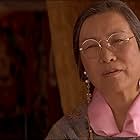Heinrich Harrer, an Austrian climber, breaks out of prison and travels to the holy city of Lhasa. He is employed as an instructor to the 14th Dalai Lama and soon becomes his close confidante... Read allHeinrich Harrer, an Austrian climber, breaks out of prison and travels to the holy city of Lhasa. He is employed as an instructor to the 14th Dalai Lama and soon becomes his close confidante.Heinrich Harrer, an Austrian climber, breaks out of prison and travels to the holy city of Lhasa. He is employed as an instructor to the 14th Dalai Lama and soon becomes his close confidante.




































